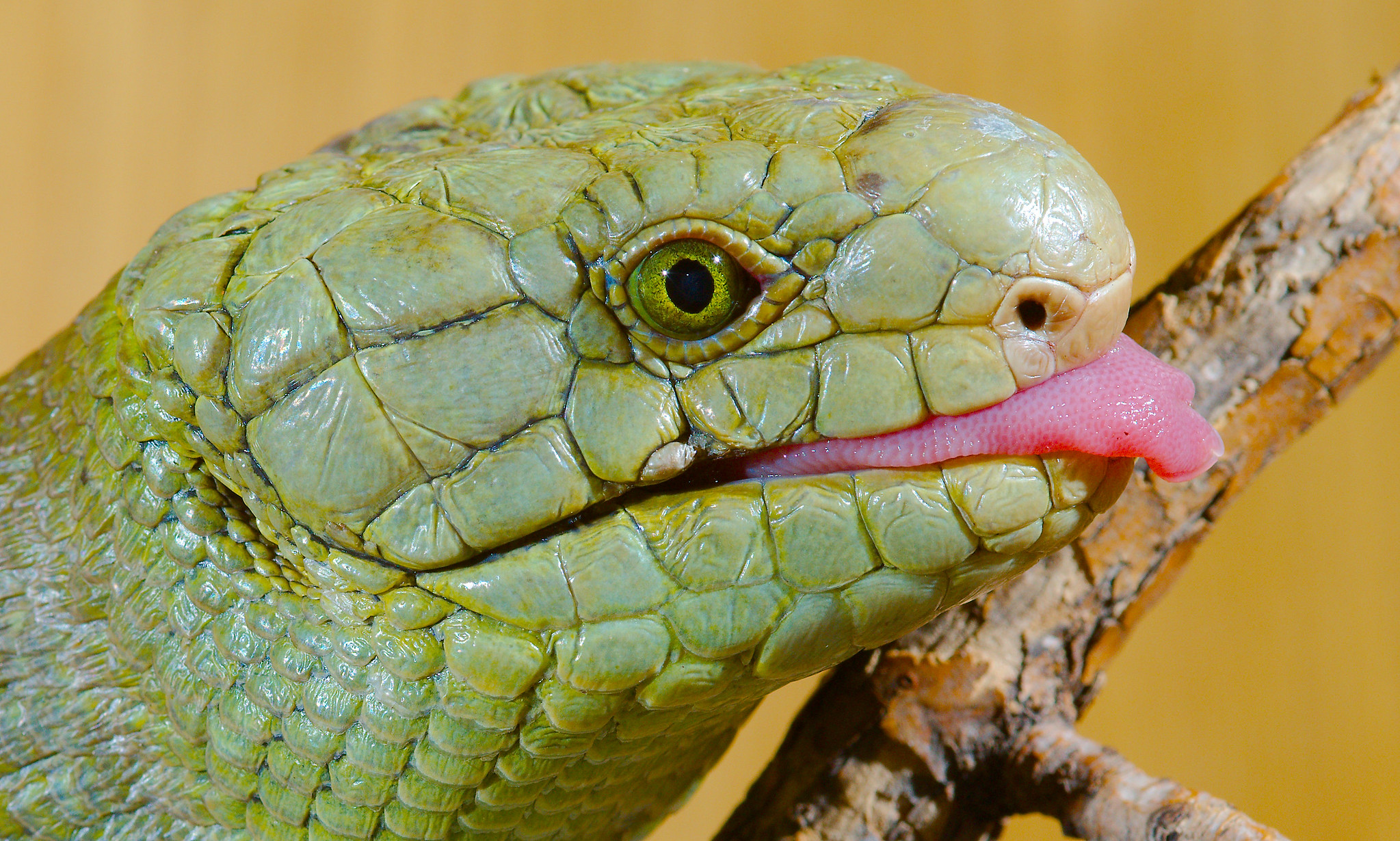Most skinks look like skinks, by which I mean that most of the 1,500 or so species in the family of lizards we call skinks have the same general body plan. Skinks have no discernible neck and squat little legs. Their heads are shaped like cones and their tails are long and tapered. They have smooth, overlapping scales, like a fish. As far as appearances go, they are a predictable bunch of lizards.
But there is one funky group of skinks in—you guessed it—Australia that have bucked skink convention and evolved some relatively unorthodox bodies. Now, a group of researchers have published a paper in Current Biology explaining exactly how these weird skinks got so weird. "They have some really kind of extreme morphologies, things that I would kind of say are bizarre," said Ian Brennan, an evolutionary biologist at the Natural History Museum in London and the Australian National University in Canberra. "But it's not really fair to call them bizarre, I guess."
These skinks are called the social skinks, as many are more social than other lizards. Some species "live in the same rock crevice with their parents and grandparents and their own young, which is pretty exceptional," Brennan said. Another species called the shingleback skink practices long-term monogamy. "Each year in spring, the males and females find their mate, the same one that they've been finding for five, 10, 20 years, " he said. "They mate with them, they walk around together all spring, and then they separate and don't see each other for the rest of the year."
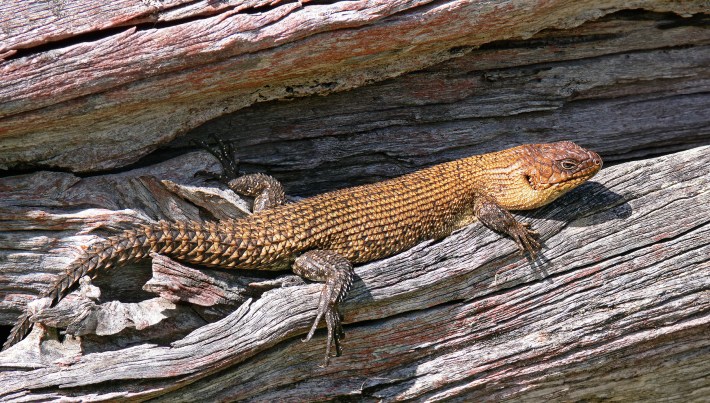
Brennan started working with the social skinks on another project, collecting genomic data from the reptiles and amphibians of Australia—the most reptile-rich country on the planet. He found some of these reptiles so interesting that he wanted to "zoom in on on some of them and and show some of the really cool evolutionary patterns that we see going on," he said.
The social skinks include the most famous skink in the world, the skink that likely introduced many people to the very idea of skinks: the blue-tongued skink. There are actually multiple species of blue-tongues, all of which have evolved a blue tongue that predators find threatening. The monogamous shingleback skink is one of the blue-tongued skinks, and it boasts another morphological adaptation that has earned it the nickname the "two-headed skink": The shingleback has evolved such a short and bulbous tail that it almost resembles a second head, an adaptation that might confound predators trying to guess where the skink will run to next.
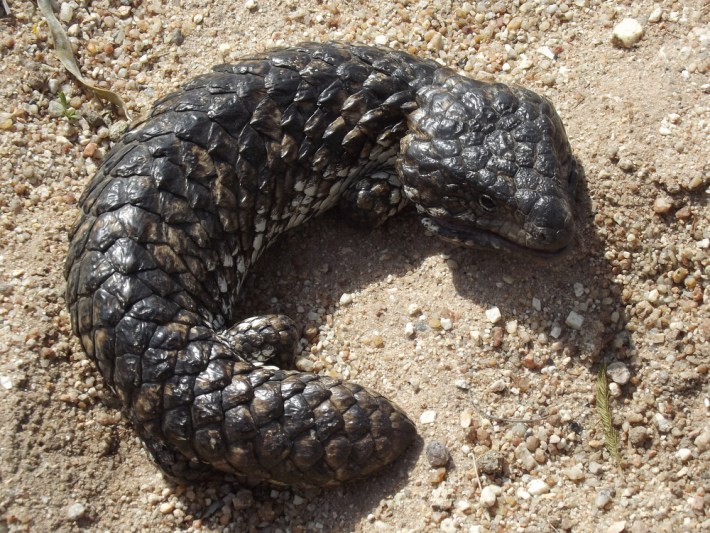
The social skinks also include a group called the crocodile skinks. "They've got these really spiny scales down their backs," Brennan said. Then there are the monkey-tailed skinks, which live up in trees in the Solomon Islands where they feast on leaves and fruits. "They're huge, and they have these long prehensile tails," he said. There are also the crevice-dwelling skinks, which boast short, spiny tails that help the lizards wedge themselves into rock crevices. "They look pretty gnarly," Brennan said. Last but certainly not least are a group called the slender blue-tongues, which are extremely long, with nubby limbs, small hands and feet, and long tails—as if a typical skink went through a taffy puller. "So we have kind of surprisingly big extremes in this group, which suits itself really well to asking these questions about how these extreme morphologies evolve," Brennan said.
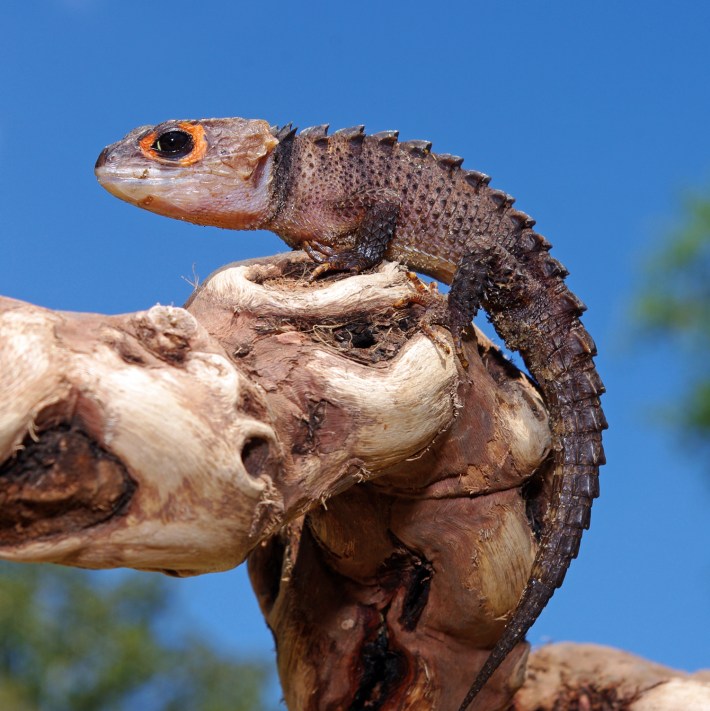
Scientists have several evolutionary theories, the most famous of which is Darwinian gradualism—the idea that species develop new traits at a relatively steady pace over long periods of time. Another theory of evolution, first articulated by the paleontologist George Gaylord Simpson, suggests that new traits can suddenly appear. If natural selection acts on an individual trait or group of traits, a skink species might evolve a small tail to a huge tail quite quickly. "Some people will say, things happen gradually," Brennan said. "And people will say, no, no no, change is punctual." But after poring over their reconstructed family tree, the researchers found that the evolution of the social skinks could be explained by both theories of evolution—long periods of slow change punctuated by rapid periods of evolution.
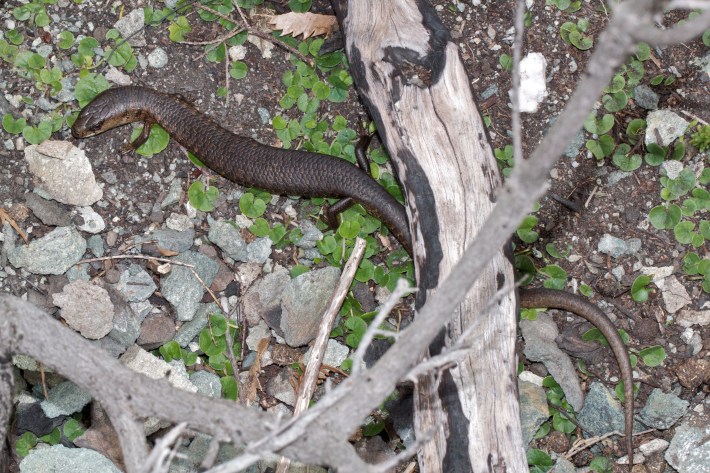
The conditions that led to these evolutionary patterns remain an open question, one that scientists like Brennan are working to understand. But Brennan knows the social skinks arrived in Australia tens of millions of years ago, at a time when the continent did not have any other animals filling a skink-like role. "You come to this continent that doesn't really have something like you yet, and you can diverge into a lot of different ecological niches," Brennan said, offering a possible explanation for such rapid changes.
Testing this theory, however, poses a challenge: "We can't just build an island, throw some animals onto it, and wait 10 million years," he said. But if this were possible, who knows what might evolve? Skinks that stink? Skinks that shrink? Skinks that eat and skinks that drink? Skinks that swim and skinks that sink? Just think, think of the unthinkable, slinking skinks!
